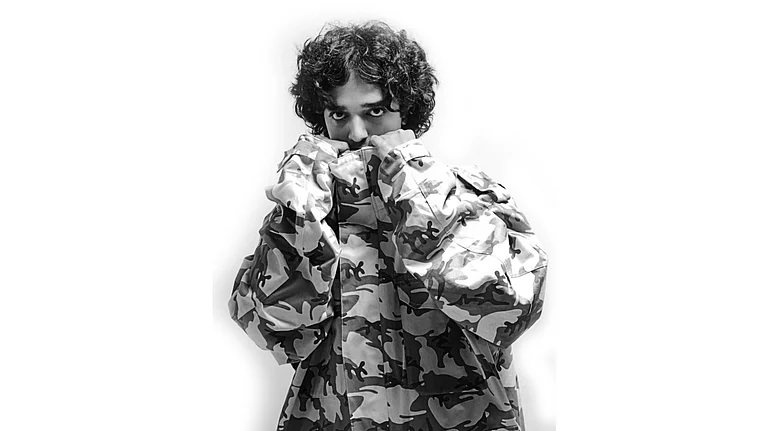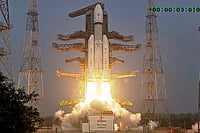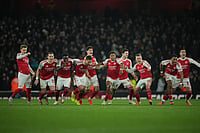
Poet, editor, lifelong collector, Adil Jussawala's archive of objects speaks not in fragments but volumes.
There are wedding photographs of his parents, a list of gifts in cash received at his Navjote ceremony.
The collection carries the signature of a poet who stood by his intent behind the words he wrote.
In 1989, I had tumbled through science and commerce to a graduate degree in English literature from Mumbai’s Ruia College. From being teased about whether ice cream was available in my small hometown, I managed to become a minorly respected student in my class, and my professors were pleased with my writing. That fuelled me to land up at the Dr E. Moses Road office of Debonair, which was famous as a girlie magazine and therefore available at men’s college hostels. And Adil Jussawalla was the editor. However, it had acquired a reputation by then for a strong poetry page edited by Imtiaz Dharker before Jussawalla took over as the editor.
I gave him a poem for publication, and he very generously and with great finesse took it from me and said, ‘We will let you know.’ I moved to Delhi to study at the Times School of Journalism and forgot about it.
Somewhere in the mid-1990s, I reconnected with Jussawalla. I went to one of his poetry workshops at the Sunken Garden in The National Centre for Performing Arts (NCPA), and for some reason I decided it would not help me. I would also see him at some book readings in the city and exchange pleasantries. This tenuous connection developed over the years, enough for me to be visiting him and his wife, Veronik, at his house in Cuffe Parade.
Eventually, as part of a broader private project to interview senior artistes, I zeroed in on him for an interview. And to my good fortune he allowed me to record it on video despite being camera shy. Ironically, Jussawalla has been a photographer since the age of 13, when his aunt, Gool Mehta, gifted him a Kodak Baby Brownie. And most of his still photos are candid rather than posed, and a few have a sense of their own historic value in being caught at a decisive moment.
Jussawalla has a W.G. Sebald-like obsession for inert, inanimate things, and material committed to paper that bear witness to the times when human memory fails. At Alibaug, The Guild showcases his memorabilia titled ‘Enlightenment from an Unlikely Envelope: Archives of Adil Jussawalla’ in a safe, chronological mode. In that sense, it is a conventional, figurative biography mounted on walls. But for those more aware of Jussawalla’s work, it provides an honest, straightforward notion of the development of a distilled artistic sensibility.
It starts in Pune with Picnics with Cousins. Sinhagad Fort. Ships. The section of photographs at Sinhagad in his childhood in the late 1940s is curiously interrupted by two of his sketches, one from 1953 and the other from 1993. Mildly exciting for purveyors of symbolism because of the contrast in the two sketches. The earlier one is more sedulous, soft-shaded, with many hair-like strokes with a slight darkening for the edges of the stairs, the line approximation of the entrance of the fort. The later one, with a wee more Brutalistically deeper lines, but curiously coloured with sketch pen to green a few shrubs into the scape like an invitation to the sun. There are also a few news photographs from contemporary media and a few pictures of art and craft pieces from Jussawalla’s loafing days of trudging through south Bombay.
He was emphatic that he was no flâneur dandy exploring the city like Baudelaire. A section on his family is revealing for the detailing of the life rhythms of a relatively rich and stable Parsi family. There are photographs of his parents at their marriage. A dutifully filled list of the gifts in cash received at Jussawalla’s Navjote ceremony and the cost of Navjote shopping. But the most voyeuristically thrilling was a letter his Shantiniketan-educated mother wrote to her sons. Jussawalla practically distils that into a message for his younger brother Firdausi, Salman Rushdie’s classmate at school, whom he cannot meet despite being in the same city because of various physical ailments.
In the accompanying patches of text against some exhibits, one gets a glimpse of how this seeming heap of random apocrypha and minutiae slowly reveal Locard’s Law that every meeting leaves a trace. Like in the poet’s later meditation, on the grounds where he and his cousins and family held picnics, on the nature of the Sahyadri mountains, he says they differ from Annapurna or Matterhorn; they remind him of pre-history with their “great slabs and pinnacles of calcified fire, the Sahyadris tell you that just as they witnessed the birth of man, they are witnessing yours”.
The things he witnesses also feed his own personal aesthetic sense where he merges the edges and the curves with a sense of light and darkness and pilgrimages and prayers. On a Jehangir Sabavala exhibition, he delineates the painter’s adventurousness with an integrity akin to a pilgrim’s rather than an explorer’s. Jussawalla identifies “bleached light” in Sabavala’s landscapes, where the painter achieves his wonted desire to represent objectively. He deems it “the Indian light”.
These influences, and a jolt from the publisher, Penguin UK, which rejected his idea of a Bikash Bhattacharjee painting for the cover of his pioneering New Writing in India, made sure that Clearing House, the publishing experiment that anointed the Bombay Poets as a historic milestone of Anglophone writing in India, had unique covers for each of their poetry anthologies. These covers, designed by Arun Kolatkar, marking the first concerted effort for better book designs in India, are mounted on the walls at the exhibition.
Jussawalla’s father, a naturopath, was famously retained in India by Mahatma Gandhi who had told him “Jussawalla, America soon juror che?” Gandhiji was also his father’s patient. His cancelled visa accompanies the text.
It was a revelation to see his distilled allusions—so rampant in his poetry—find expression about the demolition of the Babri Masjid. It carries the signature of the poet who once destroyed a collection of poems for a distinct anti-West sonority that sounded like a rant. He decided they were not to be published because they were written from a “wrong impulse”.
For a subaltern route into the development of post-Independence India to Midnight’s grandchildren, this exhibition is a rich rabbit hole to be mined for the candid serendipity of that splash of light that Edgar Silveira’s tattooed hand caught in one of Jussawalla’s pictures of friends at his 18th floor flat in Cuffe Parade. Or the chimney-smoke-like plume of light that fell on the top of the picture of the sculpture at Elephanta Caves.
Curiously, there is a photograph of writer O.V. Vijayan in that collection that looks decidedly not set in his flat. This was a reminder of a wistful feeling that there were no photos of the language writers of India whom Jussawalla met at their homes while working for the New Writing in India book. Though Nirmal Verma and Dilip Chitre do figure in his set of photos from the Iowa Writers’ Residency.
It also offers a glimpse of how an ambitious young artist pitched a series of photographs on the Parsi community to be tentatively accepted at the idea stage. But the magazine wanted a series of photos deemed acceptable to the premier photographic magazine to create a story. Falling short of money, “As a roll of a 12-exposure film roll costs a little more than Rs 29 and another Rs 10 for developing,” Jussawalla writes to Naval Tata seeking financial support from the Ratan Tata Trust. Though the series was rejected by the National Geographic Magazine, a clutch of those photos show Parsi rituals and ritualistic paraphernalia rarely glimpsed by those outside the community.
The Enlightenment from an Unlikely Envelope: Archives of Adil Jussawalla is a portal of one singular strand of consciousness with proof of archival registers to trigger a ricocheting series of minor bittersweet epiphanies for those involved in the creative arts. Much like the enlightenment I had, 36 years ago, from a brown envelope in which an editor of a now-dead magazine returned a rejected poem.
It is a rewarding, even exhilarating exhibition for those curious about how literary and artistic India found its voice in the immediate post-Independence period through a transparently plotted rivulet that joins the mighty, muddy river of the grand narrative of India’s national literature.
(Views expressed are personal)
MORE FROM THIS ISSUE
Harish Nambiar is a journalist and author of Defragmenting India































